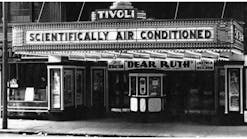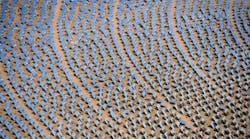As an advocate for solar energy, I was alarmed by recent news from the BrightSource Energy plant in California’s Mojave Desert. At 377 MW net output, it is billed as the largest solar thermal power plant in the world. The problem is that birds—BrightSource says about 1,000 per year, the Center for Biological Diversity, an environmental group, says the number is more like 28,000 per year—are igniting when they fly over the 300,000-plus mirrors used to focus sunlight on tower-mounted solar receivers that produce superheated steam to operate turbine generators. Federal wildlife investigators who visited last year reported seeing an average of one ignited bird every two minutes. This made me think of the old adage “too much of a good thing.”
There are many examples of that. For instance, there have been medical studies showing too much sleep (just like too little) can cause a variety of maladies, including diabetes, obesity, and headaches. We’re told to drink lots of water, but drinking too much can lead to water intoxication, an illness the symptoms of which include headache, fatigue, nausea, vomiting, frequent urination, mental disorientation, and even death.
Of course, sometimes more is better. Generally, more insulation is better than less, more trees (for shading and wind break) are better than fewer, and—unless you live somewhere like International Falls—a high solar-reflectance index on your roof usually is better than a low one.
In the HVAC industry, we are all too familiar with problems resulting from too much. An oversized air conditioner (AC) will short cycle—that is, it will satisfy the temperature set point very quickly and turn on and off too frequently. Short cycling is both a comfort issue and an operations issue, as it can damage equipment. The comfort issue, of course, is the lack of latent-load control. When you don’t run a direct-expansion system long enough to dehumidify (shorter run times limit the amount of moisture an evaporator coil can remove from air), uncomfortable conditions can result, especially in a naturally humid climate like we have in South Florida. In addition to causing discomfort, this can pose a health hazard. If the condensate remaining on a coil evaporates back into the air stream, it can encourage mold growth in ductwork. And frequent starting of a compressor can result in damage attributed to motor burn or lubrication failure, significantly reducing useful life. Clearly, this is a case of more not being good! The opposite—a significantly undersized AC system—also is not good, as it will run constantly and still be incapable of handling the actual thermal load. This not only is a comfort issue, it is a huge waste of energy and money.
Sometimes, the minimalists are correct, and less is more; other times, more is just more. The answer, at least in AC design, is “right size.”










